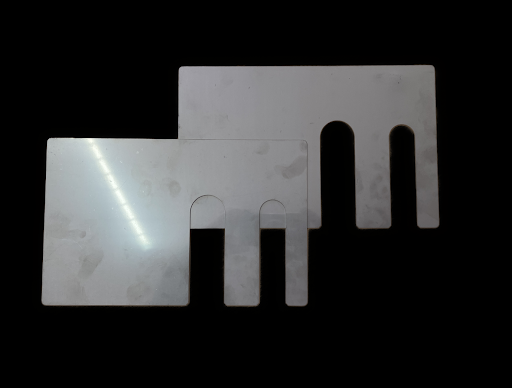What are Metal Shims used for?

Table of Contents
Whether you’re an engineer, technician, construction worker, or DIY enthusiast, it doesn’t matter. It’s very likely that you will use metal shims.
But what exactly do they do and in which situations should metal shim materials be used? Here’s all you need to know.
What Are Metal Shims?
Metal shims (also known as metal packers) are thin pieces of material that are available as sheets, strips, or pre-cut horseshoe-shaped materials. They are found in many industrial and manufacturing applications and are primarily used to fill gaps between two components.
Shim stocks are used in manufacturing and maintenance to serve as reliable spacers that deliver precise spacing. Meanwhile, there are several types of shims on the market, which can provide additional properties such as the ability to withstand high temperatures or corrosion resistance.
Metal shims are also available in various thicknesses, allowing them to fill small gaps and bigger spaces with equal precision. When you understand the use of each available shim material, they become a very useful component for automotive, construction, and engineering applications alike.

Types Of Metal Shims
Brass Shims
Brass is one of the most common choices for industrial machinery where sparks must be avoided. It is one of the softer metals used for shim materials and also boasts antimicrobial properties, which make it the perfect choice for both the medical industry and food applications where maintaining a sterile environment is necessary.
Stainless Steel Shims
Stainless steel shims are highly regarded for their durability and ability to be used in high temperature applications. They are commonly selected for construction, machinery and industrial applications where precision and reliability are essential. When the right thickness is selected, steel shims can alter clearances, tolerances, and alignments for a more efficient performance. Crucially, this can help prevent future maintenance and downtime.
Pre-Cut Shims
Pre-cut shims are made via laser cutting methods and designed in horseshoe shapes of varying dimensions while bolt size and slot size may also differ. They are often used for welding fixtures, assembly, and filling gaps in timber applications. They are usually tapered and may also be used to protect the CPUs in circuit boards.
Copper Shims
Copper shims are primarily used in electronics, transportation, and construction. Like steel shims, they can handle high temperatures and electrical voltage levels while also absorbing friction to keep machinery parts moving freely. Thor corrosion resistance is another telling factor while they can be standard sizes or bespoke items for speedy fixings.
Plastic Shims
As well as metals, shims may be made from plastic. Their waterproof properties make them a good choice for outdoor applications while a full range of colors and dimensions mean that you can find an item that’s easily identifiable too.
Shim Kits
In addition to individual shims, you can also buy shim kits that include several metal shims of varying sizes and thickness levels. They are often made using laser cutting for even greater precision. They can be used to fill spaces either individually or by stacking them, thus creating a better fit.
Why Are Shims Used?
Understanding what shims are used for is one thing, but knowing why is another issue altogether. By now you should understand how the shapes, materials, and thicknesses of shim stocks will impact where they are most suitable. However, it’s also important to realise why they are used.
Shims are a very affordable solution while they can also be added to machinery with ease. Moreover, metal shims can provide a wide range of operational and financial benefits, such as;
-
Reduce wear and tear on the components either side of the components. This means that machines last longer, which will save you a lot of money on maintenance in the long run.
-
Keep machinery working as expected, which will also reduce the risk of sudden faults that cause lengthy and expensive downtime. In turn, manufacturing time can be kept to a maximum.
-
Increased safety by avoiding sparks, maintaining a 100% sterile environment, and generally avoiding faults that could put technicians and operators at risk of accidents or injuries.
-
Improved operational efficiency due to lower tolerance requirements, which can reduce the energy consumption during operations. Equipment malfunctions are also minimised.
-
Better levels of comfort for operators as vibrations and collisions are reduced. The stock materials will adjust clearances and alignments. So, machines are able to perform freely.
Meanwhile, plastic shims offer a lighter solution that can be stacked for precision. They also will not rot or rust.
Perhaps most importantly, the use of metal shims will put your mind at ease. You will know that machinery and finished products will be designed with efficiency in mind. For the sake of a small financial outlay and minimal work, the rewards are simply incredible. If you think they could be useful for your next project, do not ignore them.
If you need any help or advice simply give us a call or fill in the enquiry form and one of our technical team will help you out.



